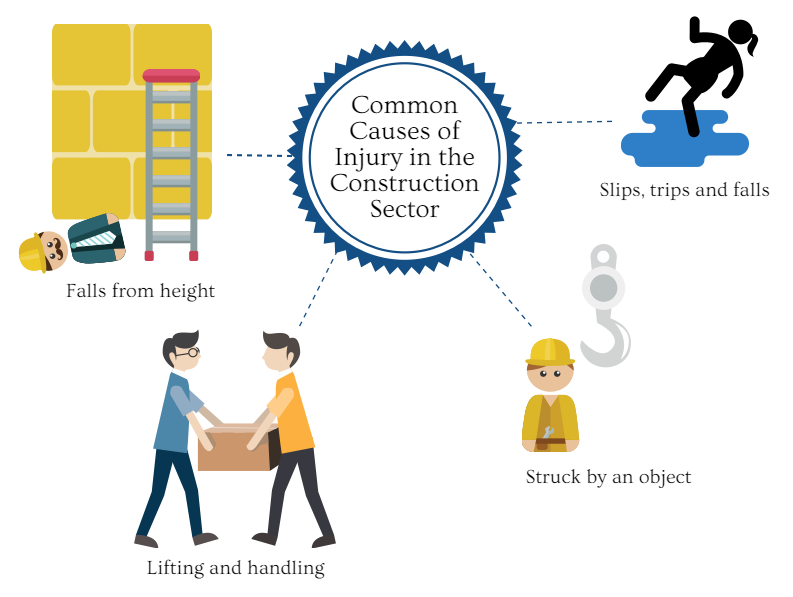Construction is one of the most highly regulated industries and health and safety is of paramount importance due to the nature and severity of the risks involved of the field. The construction sector has about four times the average rate of fatal accidents. Each year, the sector sees approximately 3% of its workers sustain a work-related injury and approximately another 3% suffer from an illness that is believed to be work-related, leading to a total of 1.7 million working days lost per year. In 2015, 35 workers and 4 members of the public were killed as a result of accidents related to construction work. Unsafe environments can result in employees and the public being put in harm’s way, criminal proceedings being brought against the company and reputational damage for a company. Putting an effective health and safety management system in place to minimise these risks is critical.
The British Standard OHSAS 18001 health & safety management standard (due to be replaced with ISO 45001) is an internationally recognised standard. Knowledge of and compliance with applicable legislation and regulations are some of the main requirements of this standard. For a company or individual found in breach of legislation it can be highly expensive. The UK Health and Safety Executive achieved a conviction rate of 93%, with an average fine per case of £25,000 last year.
In 2015 they:
- prosecuted 650 cases, with at least one conviction achieved in 606 of those cases, a conviction rate of 93%;
- prosecuted 1,058 offences, resulting in 905 convictions, a conviction rate of 86%;
- handed out fines totalling £16.5 million, an average penalty of £18,198 per offence.

Asbestos
Although asbestos was banned for use in most developed countries in 2000, it may still be found in many existing structures. Renovations, maintenance and development on brownfield sites can expose construction workers to this hazard. Inhalation of asbestos fibres can cause serious lung diseases. There is no safe level of exposure, and every incident of exposure has the potential to cause disease. A very complicated set of legal requirements exist for dealing with asbestos, such as the Control of Substances Hazardous to Health Regulations 2002 (COSHH), Control of Asbestos Regulations 2012 (CAR) and Construction (Design and Management) Regulations 2015 (CDM) to name but a few applicable pieces of legislation in the UK.
Hand-arm vibration
Hand-arm vibration syndrome is another danger associated with construction work. The extended use of power tools can cause permanent damage to the hands and arms, making them incurably numb. Any attempts to work with this condition results in pain and loss of dexterity and grip strength for those affected. Fortunately, it is easily preventable. Power tools should be rotated through several workers, so no one worker uses it for more than the recommended amount of time. There is some legislation in the area of hand-arm vibration syndrome, such as Chapter 2 of Part 5 and Schedule 6 of the Safety, Health and Welfare at Work Regulations 2007 which relates to exposure to physical agents at work and sets out the requirements relating to the control of vibration at work in Ireland. In the UK, the Reporting of Injuries, Diseases and Dangerous Occurrences Regulations 2013 (RIDDOR) requires employers to report and keep records of work-related deaths, serious injuries, diagnosed cases of certain industrial diseases and near-miss incidents. While the Control of Vibration at Work Regulations 2005 are intended to protect people from both hand-arm vibration and whole-body vibrations arising from work activities. These regulations place duty on employers to ensure health risks arising from exposure to vibration are assessed thoroughly which are then either eliminated or reduced.
Sources


